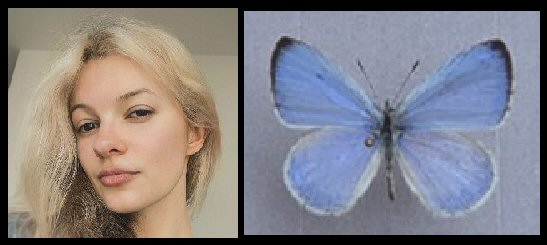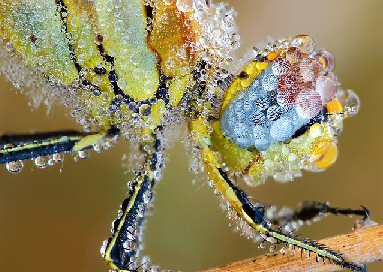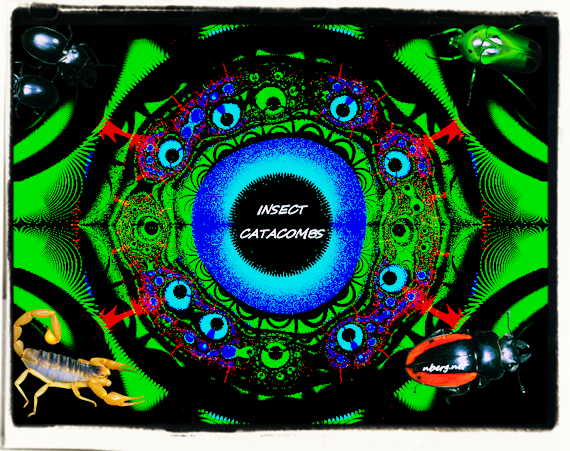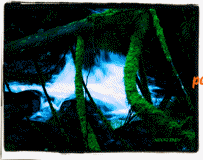| Welcome to INSECT CATACOMBS the UNDERWORLD OF INSECTS!
Here you will DISCOVER current RESEARCH in ENTOMOLOGY, MITES, SPIDERS, COLLEMBOLA,
INSECT DIGITAL ART, and many links to INSECT-related science.
Thanks for visiting INSECT CATACOMBS! |
CURRENT INSECT SCIENCE RESEARCH NEWS:

Beetle dazzles insect scientists: January 18, 2007
The finger-tip sized Cyphochilus beetle, found in south-east Asia, had a shell whiter than most other materials found in nature, UK researchers said.
Close inspection reveals a unique surface structure covered with scales 10 times thinner than human hair.
A report in Science magazine claims mimicking these scales could provide a range of applications for industry.
"Such pure bright whiteness is uncommon in insects," explained lead scientist Dr Pete Vukusic of Exeter University.
"You do see the odd bit of whiteness here and there, mainly in butterflies, but the whiteness is really incomparable with this little beetle."
In the study of the insect, Vukusic's team used a number of techniques such as optical microscopy, laser analysis and spectrometry.
The researchers found, according to the International Organization for Standardization measurements, the beetle was much brighter and whiter than milk and the average human tooth.
The beetle's shell was covered with ultra-thin scales, measuring just five micrometres (millionths of a metre), with highly random internal 3D structures.
This irregular structure, explained Dr Vukusic, was the cause of the beetle's whiteness.
While colour, he explained, could be created through highly ordered structures, whiteness is achieved through very random features that scatter all colours simultaneously.
"The degree of whiteness given the scales' thinness is the really impressive thing," Dr Vukusic added.
"We can create this quality of white synthetically, but the materials need to be much thicker. This could have many applications."
The researchers believe industry might draw inspiration from the beetle to enhance the whiteness of synthetic objects, such as papers, plastics, paints or white-light displays.
The team thinks the beetle evolved to be so white because the colour provides camouflage in amongst the white fungi common to where it is found.
SOURCE: https://news.bbc.co.uk

Insects left disfigured by nuclear radiation April 24, 2008
No one wants to live too close to a source of artificial radiation, not even insects
. Cornelia Hesse-Honegger has spent 20 years travelling around the world, mostly in Europe,
capturing and studying over 16,000 insects, many living in the vicinity of nuclear power
stations, or other artificial sources of radiation. Her conclusion, not surprisingly,
is that exposure to radiation increases the chances of deformity.
SOURCE:
https://www.newscientist.com/article/dn13760-insects-left-disfigured-by-nuclear-radiation.html

Physicists investigate structural properties of spider webs
- by Lisa Zyga February 8, 2010
Physicists have developed a model for the mechanics of spider orb webs, like the one shown, which spiders have been spinning
for at least 200 million years.
(PhysOrg.com) -- "Although the orb web of a spider is a lightweight structure, it seems to be a highly optimized structure,
presumably as a result of evolution from the Jurassic period or earlier," explain physicists Yuko Aoyananagi and Ko Okumura,
who are investigating the structural properties of spider webs. "It seems to resist different loads such as wind and insect
impact efficiently and can catch prey even if some threads are broken."
SOURCE:https://www.physorg.com/news184853047.html

New species of butterfly named after Iryna Zarutska
- by Harry Pavulaan September 26, 2025
"A previously unrecognized species of Celastrina (butterfly) from the southeastern
coastal plain region of the United States (Lycaenidae: Polyommatinae)
named in honor of the memory of Iryna Zarutska."
SOURCE:https://digitalcommons.unl.edu/cgi/viewcontent.cgi?article=1107&context=taxrpt
MITES AND COLLEMBOLA



 SCANNING ELECTRON MICROSCOPE PICS
SCANNING ELECTRON MICROSCOPE PICS

UNIVERSITY OF BRITISH COLUMBIA BIODIVERSITY RESEARCH CENTRE - Mites and other Microarthropods
MICROARTHROPOD PSYCHEDELIC DIGITAL ART HERE





INSECT PHOTOS

 https://www.sciencephoto.com/dennis-kunkel-microscopy-collection
https://www.sciencephoto.com/dennis-kunkel-microscopy-collection

 Troy's Nature Closeups Blog
Troy's Nature Closeups Blog
THE FLY
| Little fly, Thy summer's play My thoughtless hand Has brushed away. Am not I A fly like thee? Or art not thou A man like me? For I dance
And drink and sing, Till some blind hand Shall brush my wing. If thought is life And strength and breath, And the want Of thought is death, Then am I A happy fly, If I live Or if I die. William Blake |



 Bochdansky & Kriftner Beetles MULTIMEDIA
Bochdansky & Kriftner Beetles MULTIMEDIA






This is an awesome photo of a dragonfly covered in dew by photographer
Martin Amm
Check out the full size photo here!
 Dragonfly Anatomy here
Dragonfly Anatomy here


University of Michigan

 GIANT Ant hill in Australia!
GIANT Ant hill in Australia!
 Smithsonian Institute
Smithsonian Institute
Directory of Invertebrate Resources Entomology Index of Internet Resources
Entomology Index of Internet Resources


 Keith Edkins Insect Photos
Keith Edkins Insect Photos
Electronic Resources on Lepidoptera





 photo by Tom Pennington / Fort Worth Star-Telegram
photo by Tom Pennington / Fort Worth Star-Telegram
Sprawling spider web blankets Texas trail
Ed Nieuwenhuys Spider Photos






 Spider Webs
Spider Webs


Spiders of Australia

 500 pictures with 200 species of spiders!
500 pictures with 200 species of spiders!
 Spider Eye Arrangements at BugGuide.net
Spider Eye Arrangements at BugGuide.net
 Spiderzrule.com photos
Spiderzrule.com photos



 EMAIL HERE
EMAIL HERE
|
Thanks for visiting INSECT CATACOMBS - links to the UNDERWORLD of insects! |

Please also surf to the following web pages! Thank you very much for your support!
 FRACTALS HERE
FRACTALS HERE
|
 NATURE AND ANIMAL TOTEM CARTOONS
NATURE AND ANIMAL TOTEM CARTOONS
|

 DOLPHINS AND WHALES
DOLPHINS AND WHALES
|
 DOWNLOAD MUSIC MP3!
DOWNLOAD MUSIC MP3!
|


 © since 2002
nberg.net
© since 2002
nberg.net




































 Smithsonian Institute
Smithsonian Institute Entomology Index of Internet Resources
Entomology Index of Internet Resources

 Keith Edkins Insect Photos
Keith Edkins Insect Photos






























